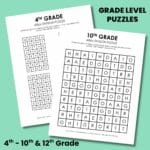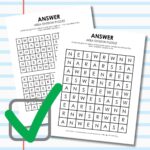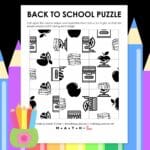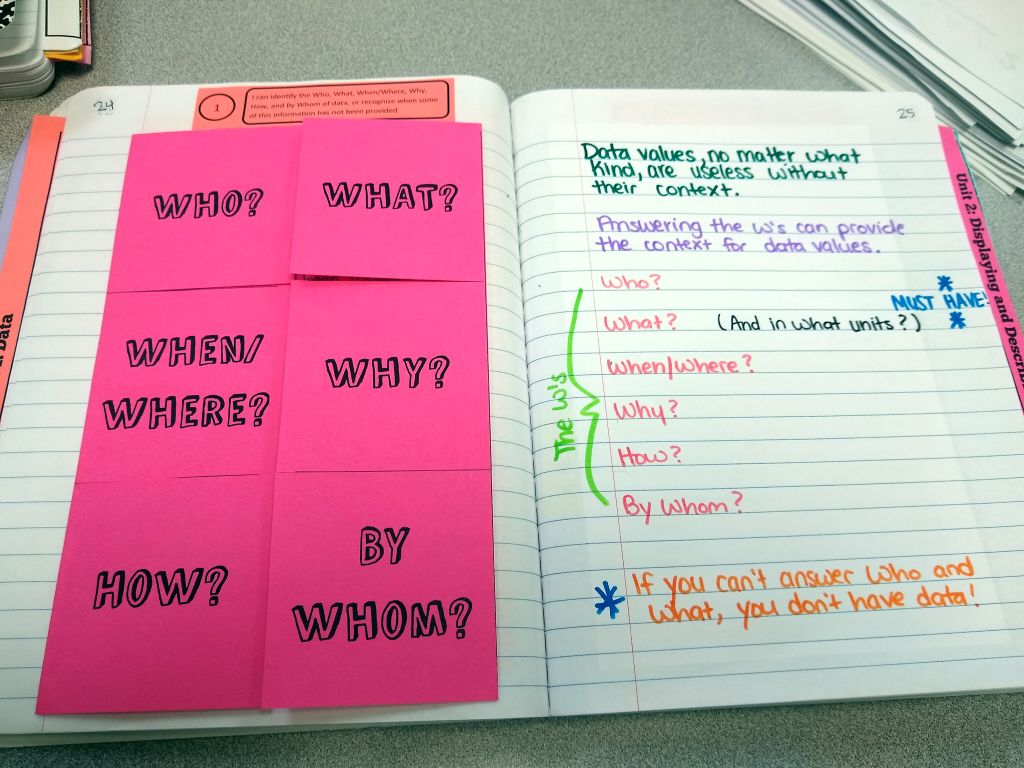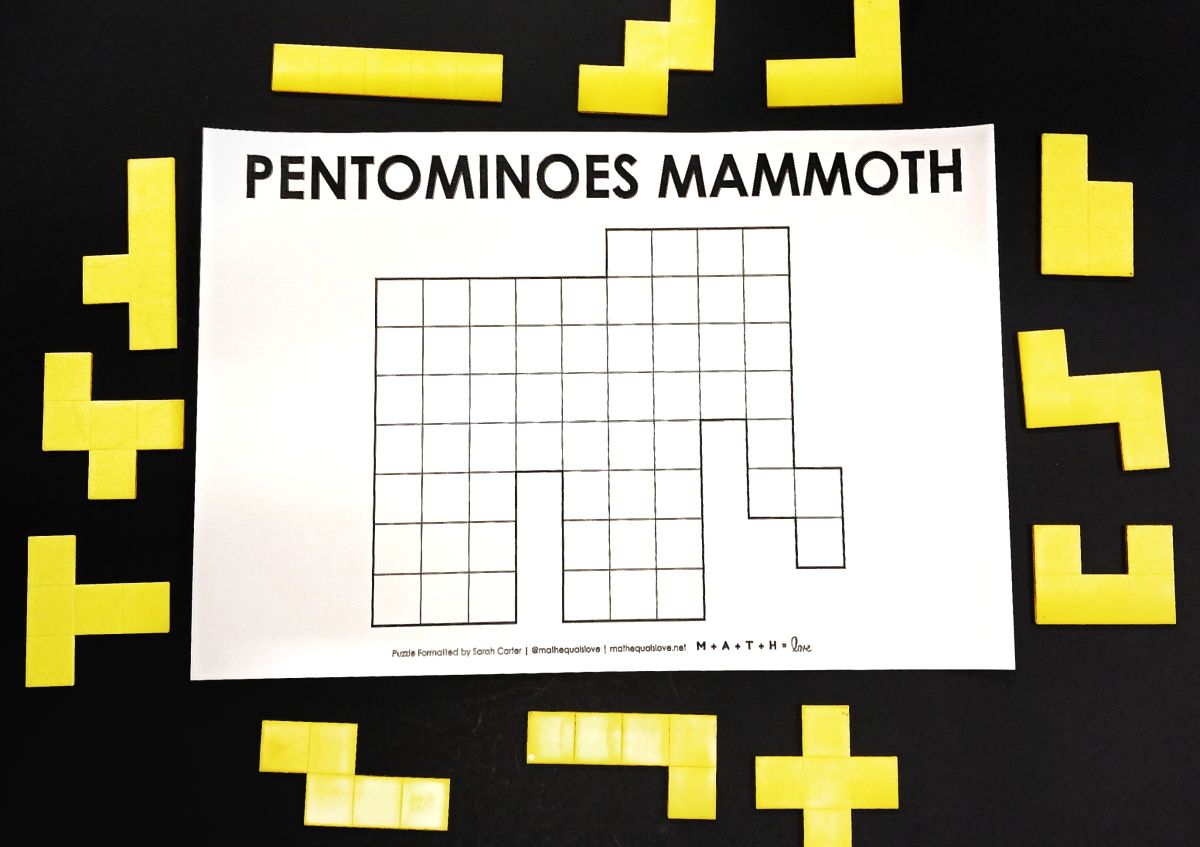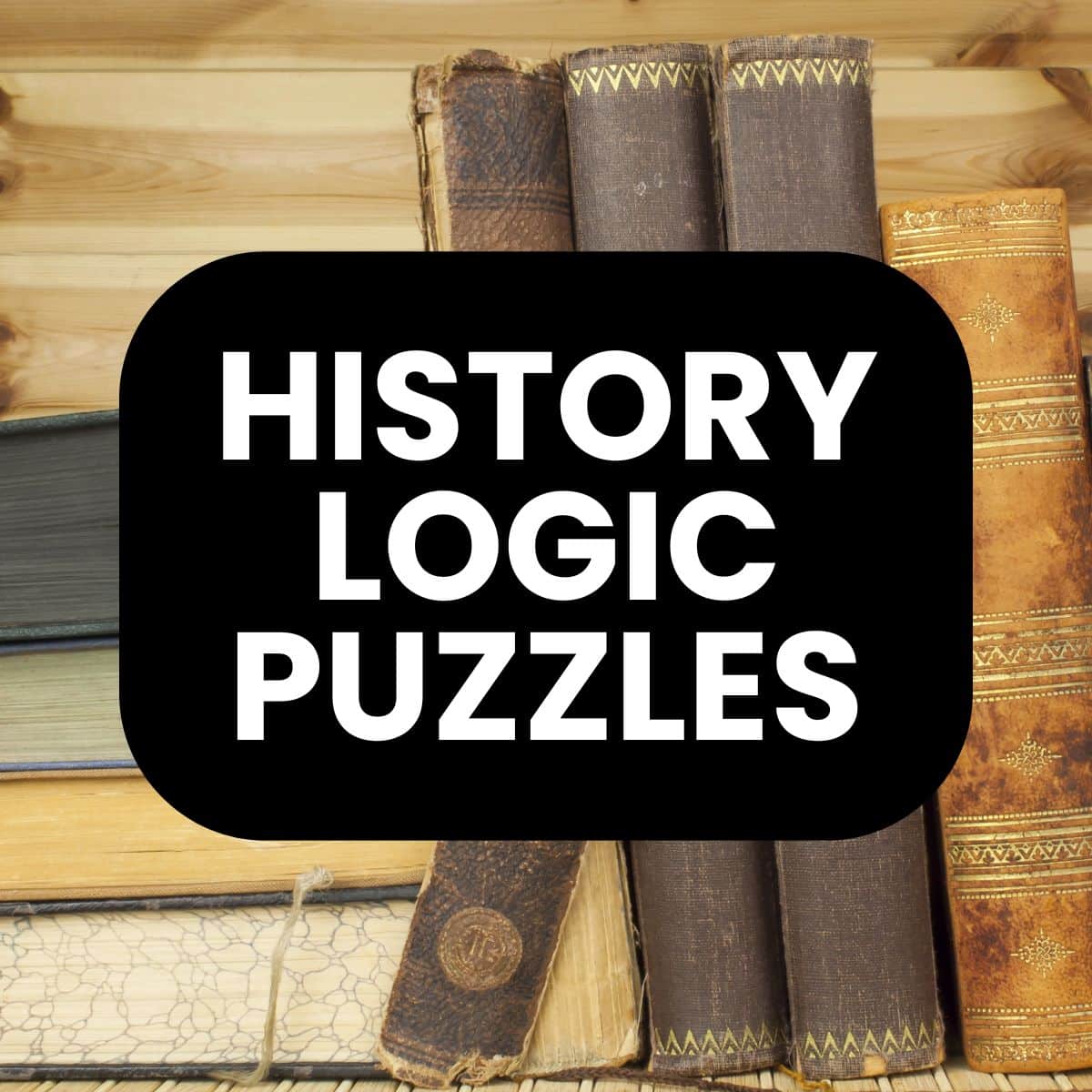Number Contests for the First Day of School
This blog post contains Amazon affiliate links. As an Amazon Associate, I earn a small commission from qualifying purchases.
Need a first day of school activity for your math class? These fun number contests will engage your students, force them to reason and collaborate together, and add a fun dose of competition to the first day.
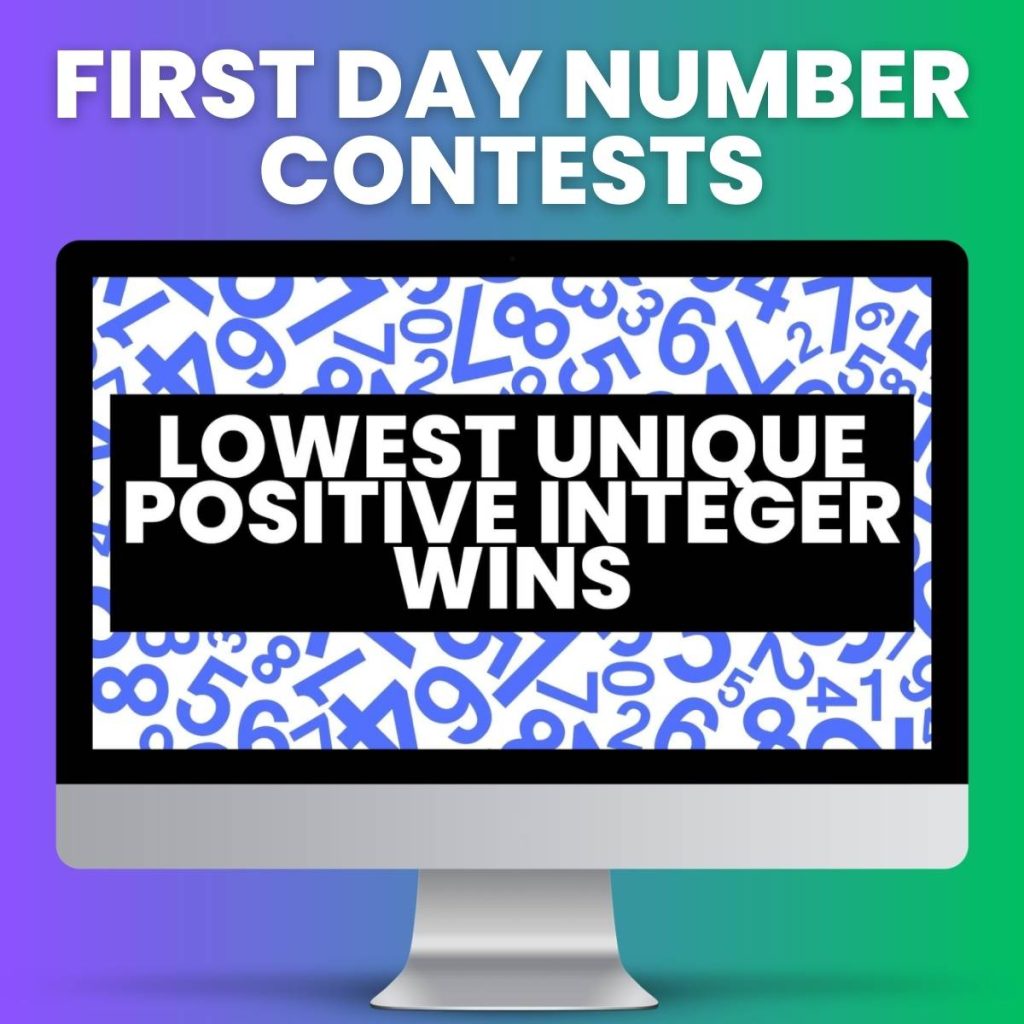
The first day of school here in my part of Oklahoma has come and gone. I have now been back at school for about two weeks, and I have had students in my classroom for the past 7 days.
I have four different preps this year (Precalculus, AP Precalculus, AP Calculus AB, and Statistics), and I have had a terrible time getting on top of having four different classes to prepare materials for.
The last time I had four preps was the 2017-2018 school year. That year was rough, but I had forgotten just how much extra items end up on your to do list with one more class than you’re used to.
I say this all to explain why I am so late sharing this blog post. Teaching and being a mom to two kiddos is kicking my butt.
Looking for more first day of school activities and puzzles for your classroom? I have a giant blog post dedicated to 40+ activities for the first week of school.
Here’s a few examples of some of these engaging activities for the beginning of the school year.
Why Number Contests?
I wanted to come up with an entirely new first day of school math activity. I have done so many different activities over my twelve years in the classroom during the first week of school.
Remember, I’m the girl who wrote a blog post with 40+ Ideas for the First Week of School.
Every year, I have students that I had the previous year, so this is part of the reason I try to change things up each year. Plus, since I have blogged about my first week activities for so long, there is a chance that my students may have done one of the activities I blogged about in a previous year’s math class.
This set of number contests for the first day of school was inspired by a little number-based activity that I learned of YEARS ago from reading math teacher blogs and math teacher twitter. I can’t remember who shared it originally, but I have seen several variations and adaptations of it over the years.
The idea is simple. Each student picks a counting (natural) number. The student who picks the lowest unique number wins.
When Fawn Nguyen came out with a Desmos version of this little game a few years ago, I eagerly tried it with one of my classes. They participated, but they didn’t get as into the activity as I had hoped.
I decided I wanted to try again, but I wanted to build it out into a activity with many different number contests for students to participate in. These other number contests were inspired by some old files posted by MathsJam New Zealand. I’ll link to them later in this post.
Prepping Your Classroom for the Activity
I’m hoping to implement some of the strategies shared in Peter Lijedahl’s Building Thinking Classrooms this year, so I have set up classroom up with 9 whiteboard stations around the perimeter of the classroom.
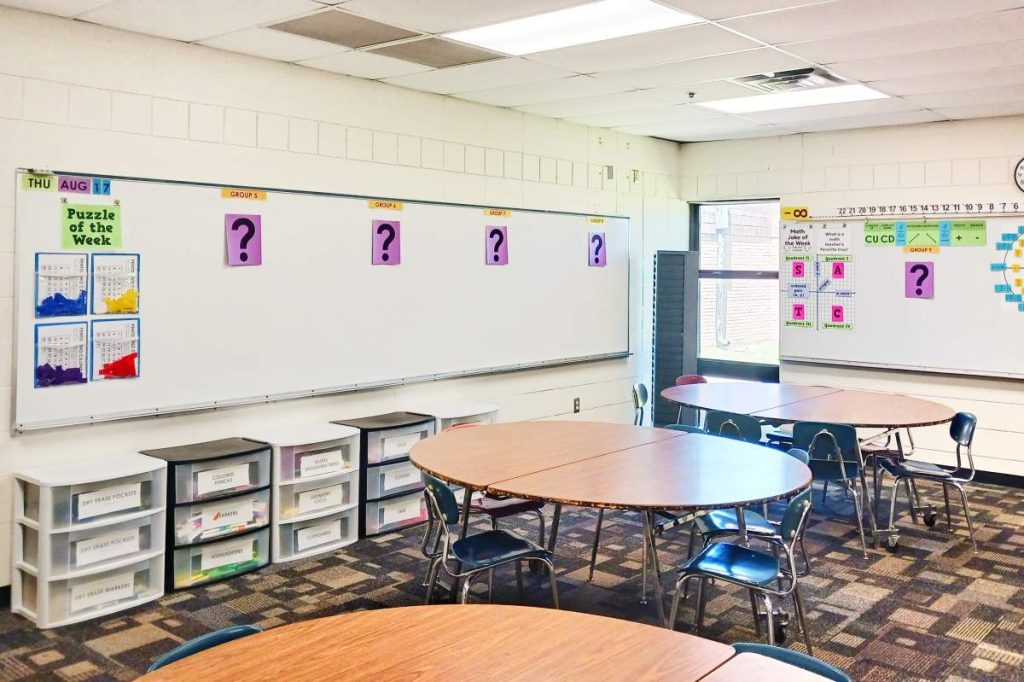
Some of these stations are actual sections of dry erase board. Then, I added 4 wipebooks to my bulletin boards to increase my dry erase space.
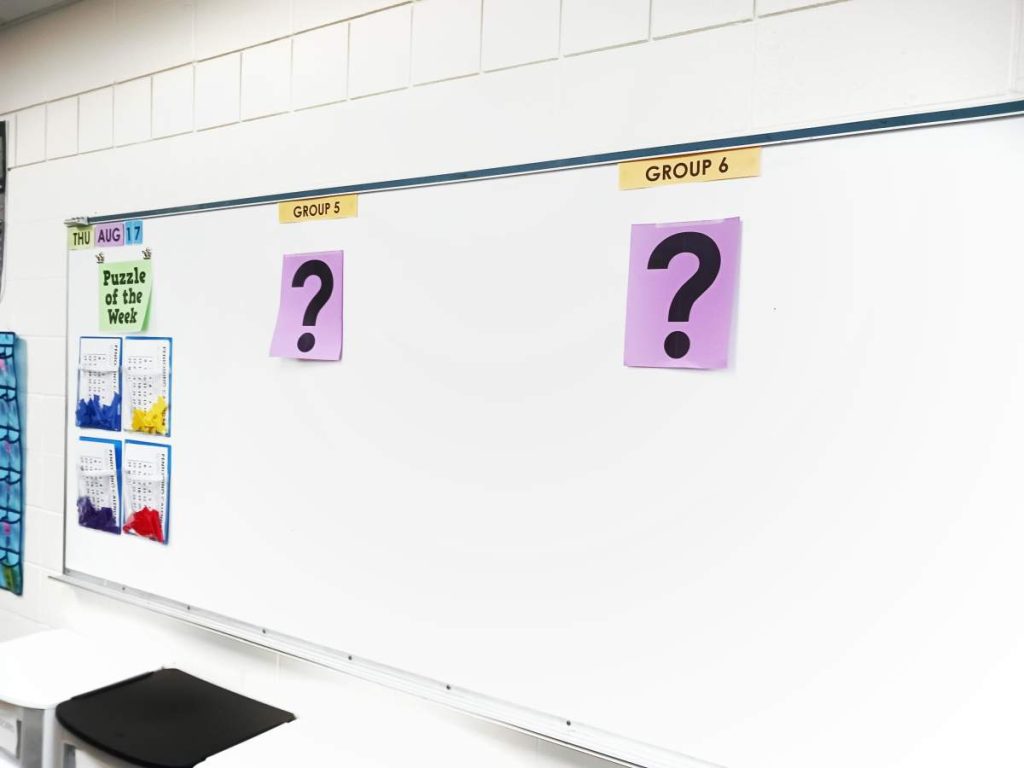
I printed off giant question mark posters on purple cardstock, and I taped one poster to each station with a long strip of tape at the top of the poster. This allowed students to be able to write underneath their question mark poster.
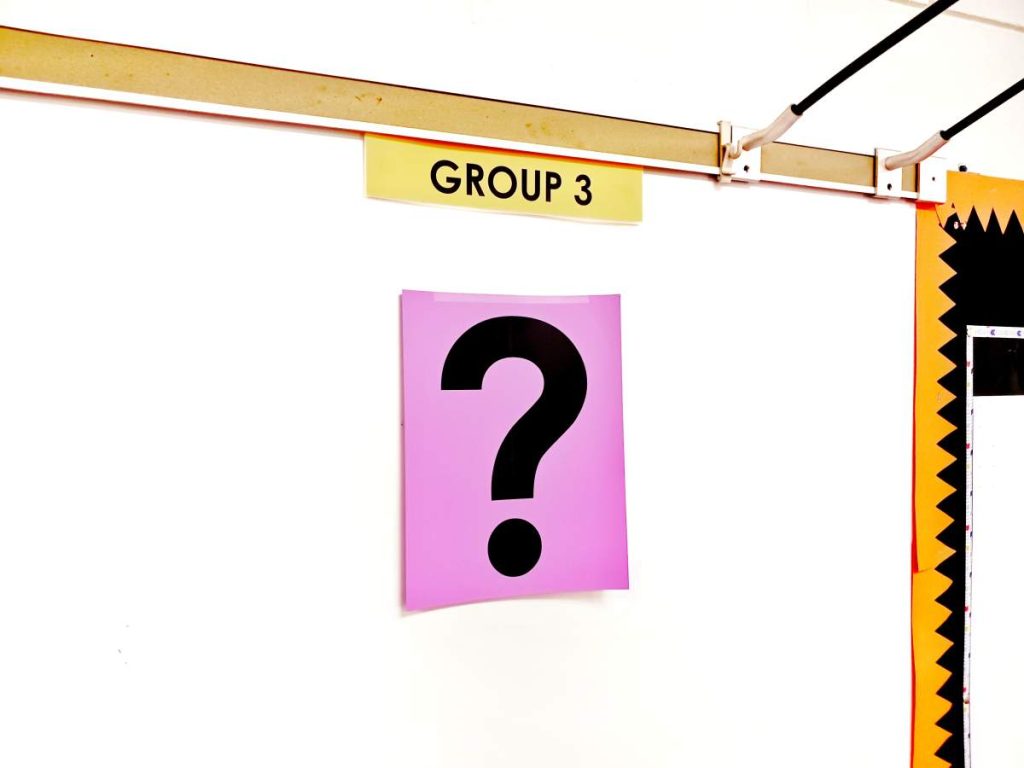
These question mark posters (found at the bottom of the post!) served two purposes:
- I wanted to grab my new students’ attention from the first time they walked in my classroom. Giant question mark posters aren’t something you see taped around a classroom every day. I wanted them wondering “What are we going to be doing today?”
- I wanted a place for students to be able to secretly write their answer to each number contest. I also wanted the answers to be covered after students submitted their answers so that no groups could try and “cheat” and change their number after seeing other groups reveal their answers. Can you tell I have had issues with this previously when doing competitive group activities???
I used my Promethean board to display the rules for each of the number contests. You could also give the instructions verbally, but I found that my students appreciated the visual reminder of which contest we were working on at the time.
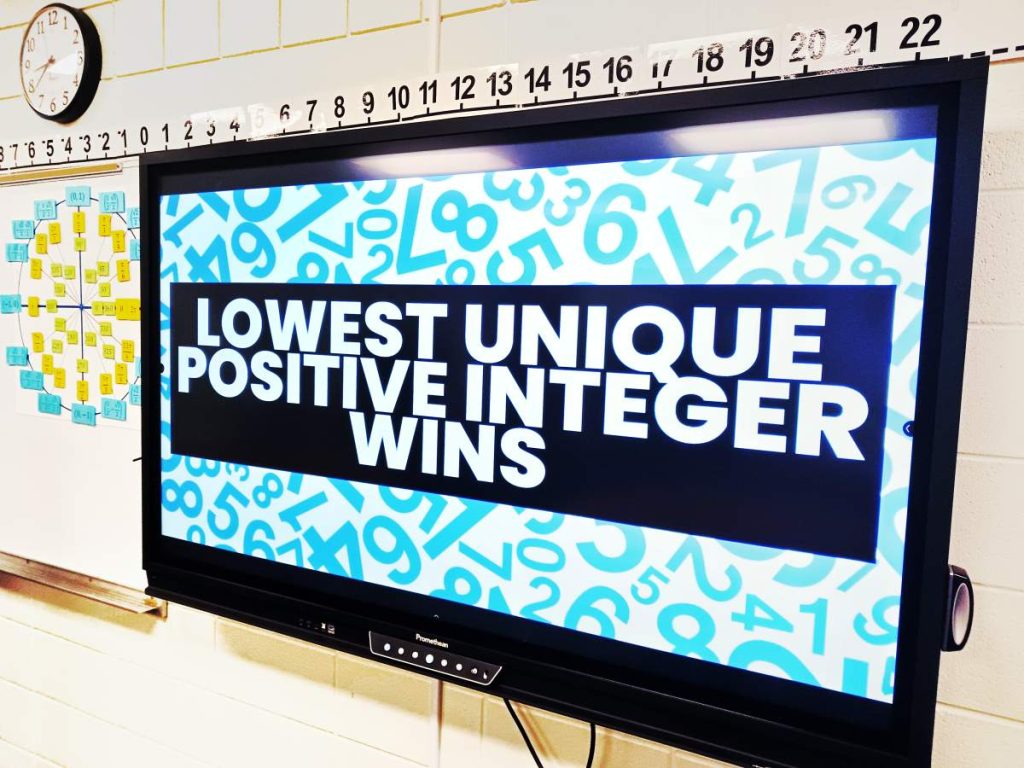
You also need to decide what sort of reward you want to give students (if any at all).
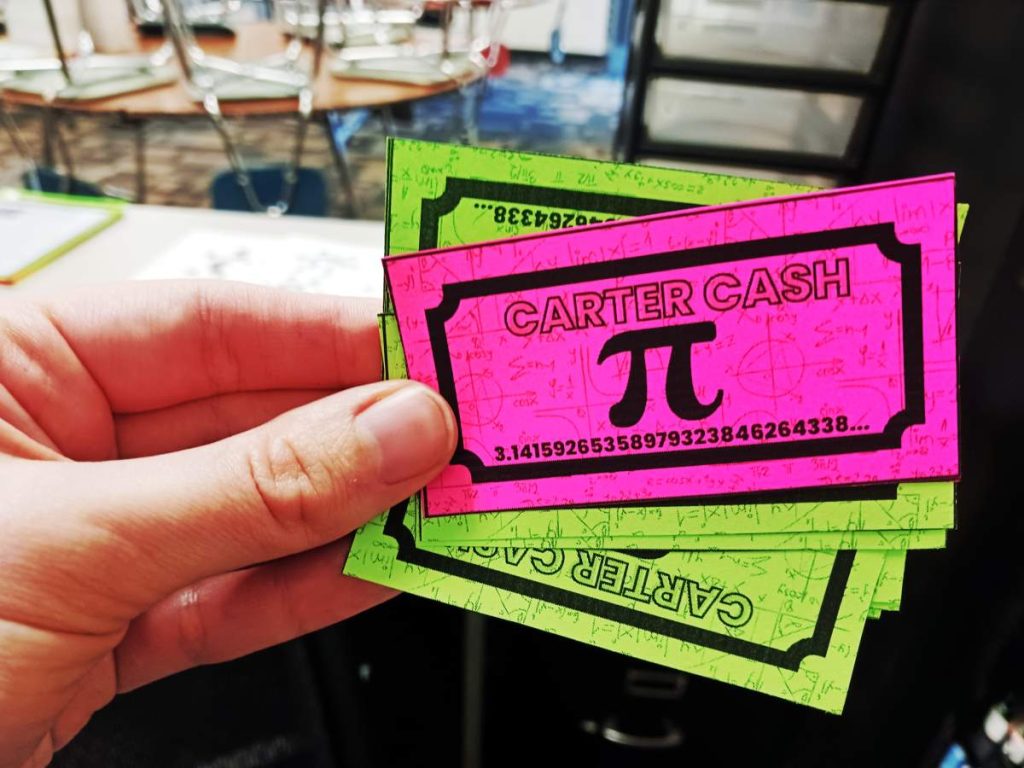
This year, I’m instituting a reward system I’m calling “Carter Cash.” When we do activities throughout the year, I will give students a piece of Carter Cash as a prize. Students will be able to redeem their Carter Cash later in the year for a few bonus points on a quiz or test.
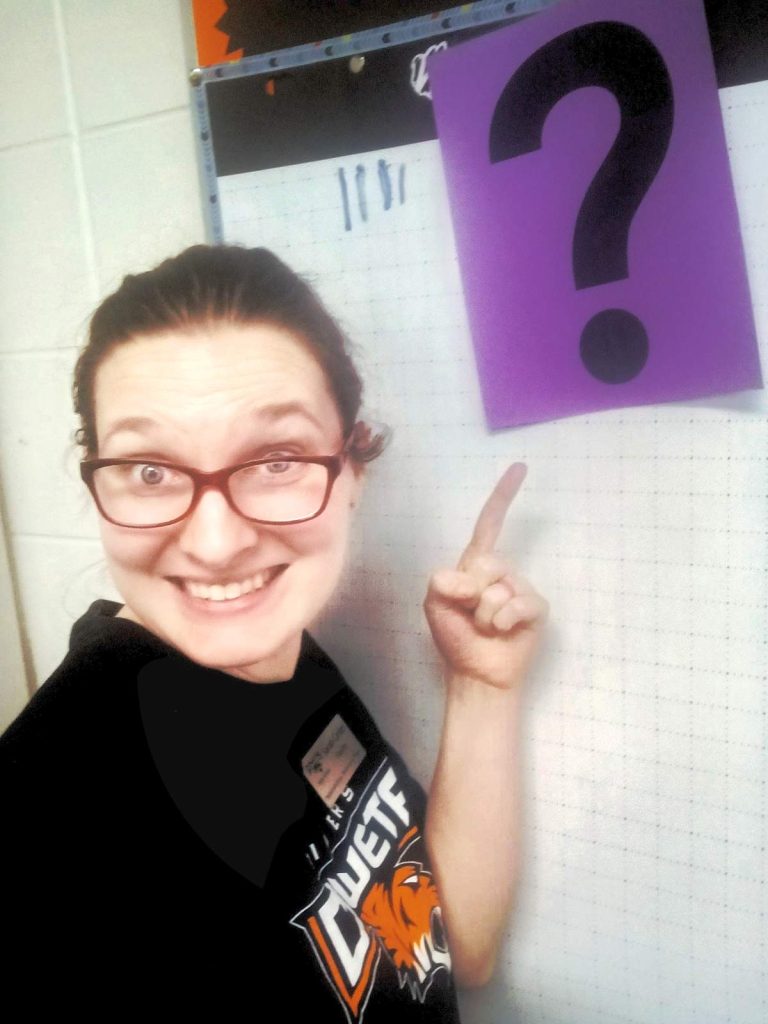
We did a wide variety of number contests, and I had students keep score of how many points they had won during the activity by drawing tally marks next to their question mark poster. At the end of all of the contests, I gave Carter Cash to the two highest scoring groups.
Running the Number Contests Activity
When students entered my classroom on the first day of school, I had a message on the Promethean board which read “Have a seat anywhere!”
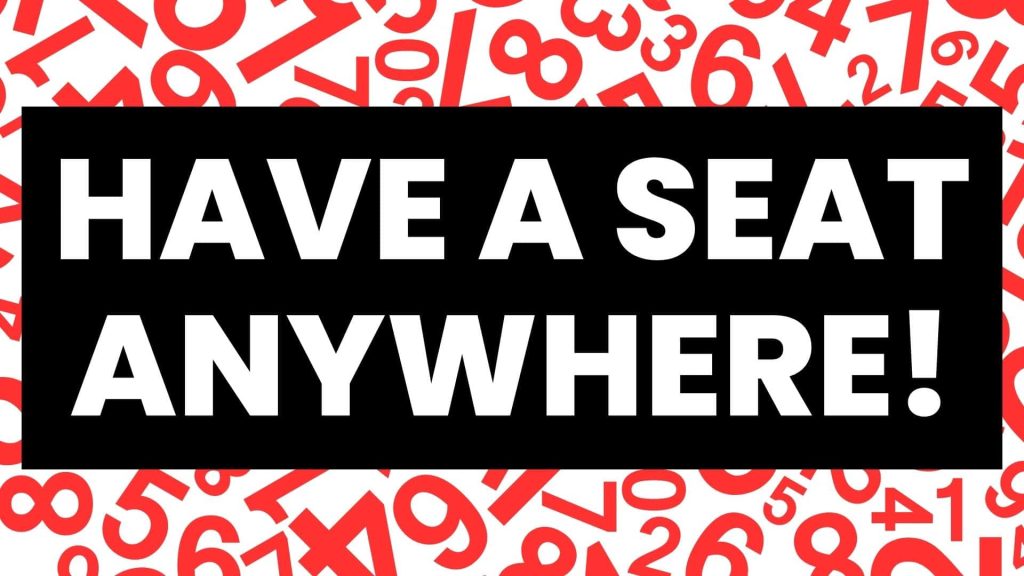
After the bell rang, I made sure that everyone in the room was supposed to be in the room and hadn’t accidentally came to math class instead of history class or something like that.
After taking roll, I told the students we were going to be doing a number contests group activity that required them to be in groups of 2 or 3. I showed them the dry erase stations set up around the classroom, and then I let them divide themselves up in groups and find a station around the room.
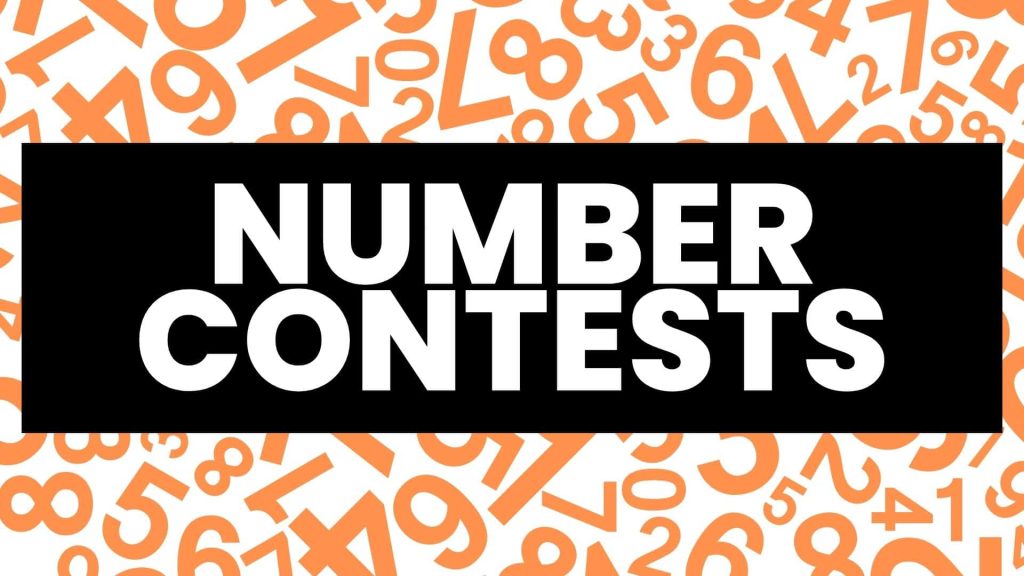
I plan on using a random group generator later in the year when we work at the vertical white boards. This was too much trouble to pull off on Day 1 due to ever-changing student schedules, so I just let them pick their groups.
If you did want to randomize the groups, you could easily pass out playing cards to separate the students into groups.
Once students were in groups, I announced the first contest. This was the one inspired by a math teacher blog or math teacher twitter post of long ago.
Lowest Unique Positive Integer Wins
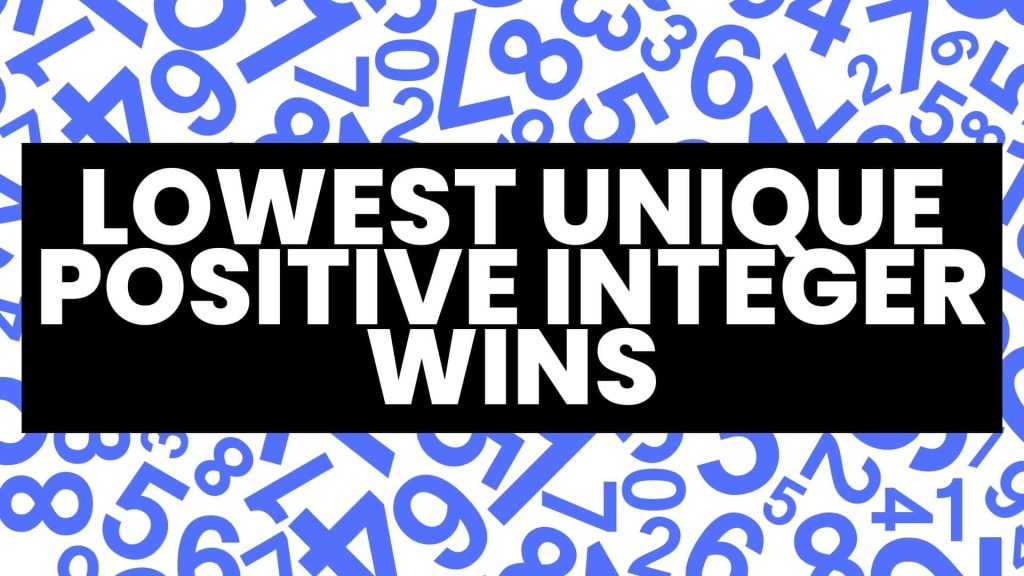
This is one of the easiest of the number contests, but the long title can be a bit off-putting to students. I told them that I knew they had been on summer break for the past few months, so we were going to take the contest a word at a time until we figured out what it meant.
This set of number contests had a nice added benefit of letting me review some math vocabulary on the first day of school in a fun context.
I asked a series of questions:
- What does lowest mean? Smallest.
- What does unique mean? Different. You don’t want the same answer as anyone else.
- What does positive mean? Not negative. Greater than zero.
- What does it mean for a number to be an integer? No fractions or decimals.
Then, I told students to confer with their group members and decide what number they were going to pick. When groups had picked their number, they wrote it with a dry erase marker underneath their question mark poster.
We then went around the room with each group lifting their question mark poster and revealing/saying their answer aloud to the class.
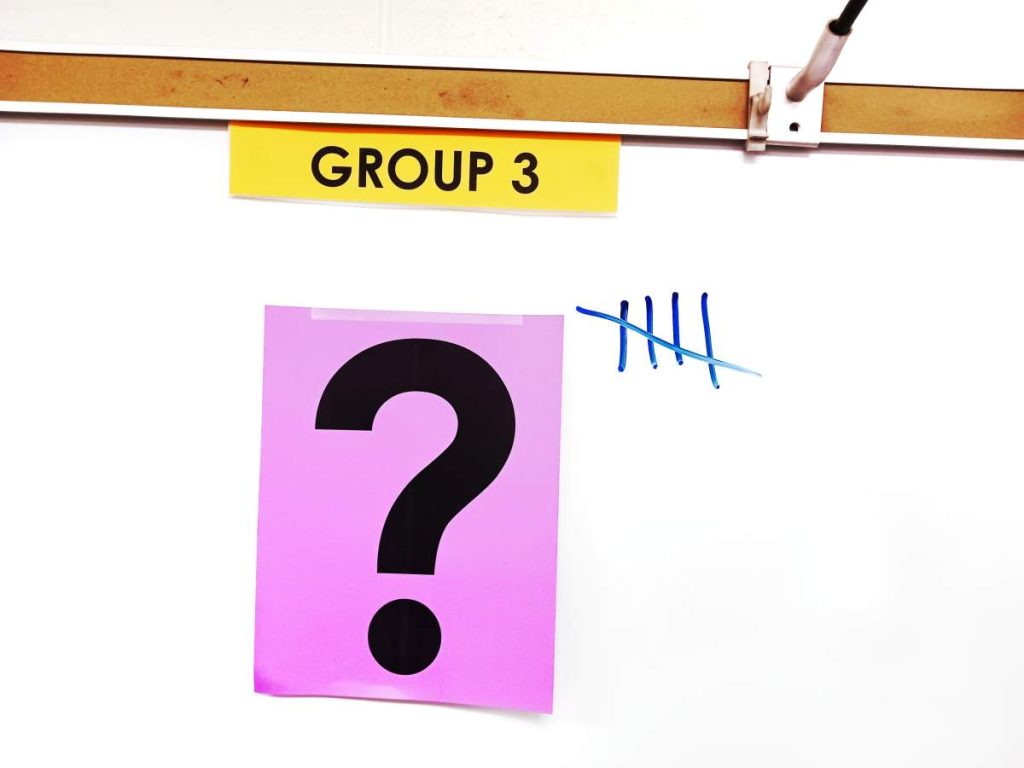
When the winning group was revealed, they added a tally mark next to their question mark poster. Now that students understood how the game worked, we played two more rounds.
I found that my students’ attention span lasted for about 3 rounds of each number contest before they began to grow a bit restless/bored.
Median Number Wins
I borrowed this median number wins contest from Mathsjam New Zealand’s Median Number Contest.
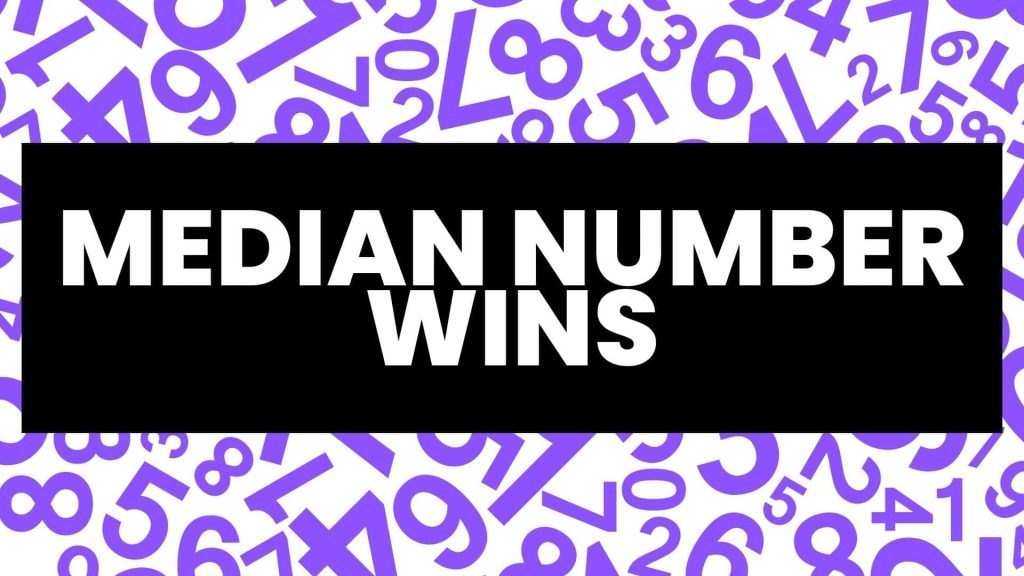
Each group had to pick a number. Any real number was fair game this time. Fractions, decimals, and negative numbers were all allowed.
As each group revealed their answer, I wrote them on the Promethean board in ascending order to help us easily find the median.
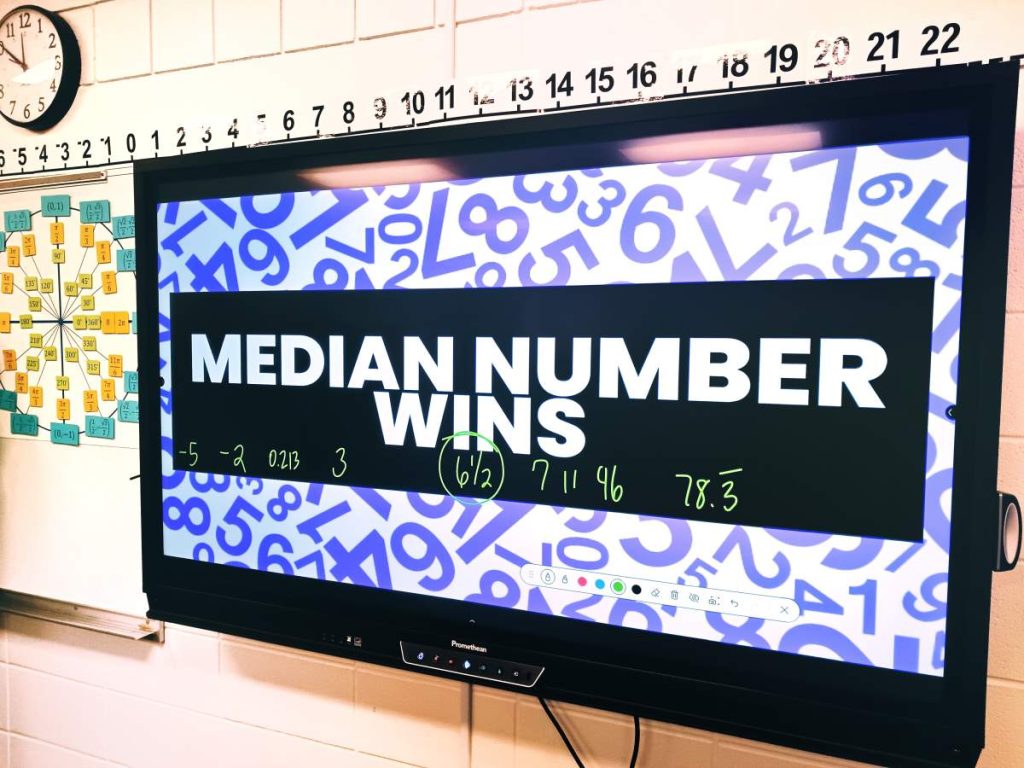
Do be aware with this contest that if you have an even number of groups that there will be 2 winners. I had that happen several hours, and it was completely okay.
Number Closest to Another Wins
Of all the number contests, this one was probably the hardest to explain to students. The number closest to another team’s number wins.
This was inspired by MathsJam New Zealand’s Number Closest to Another Contest from 2021.
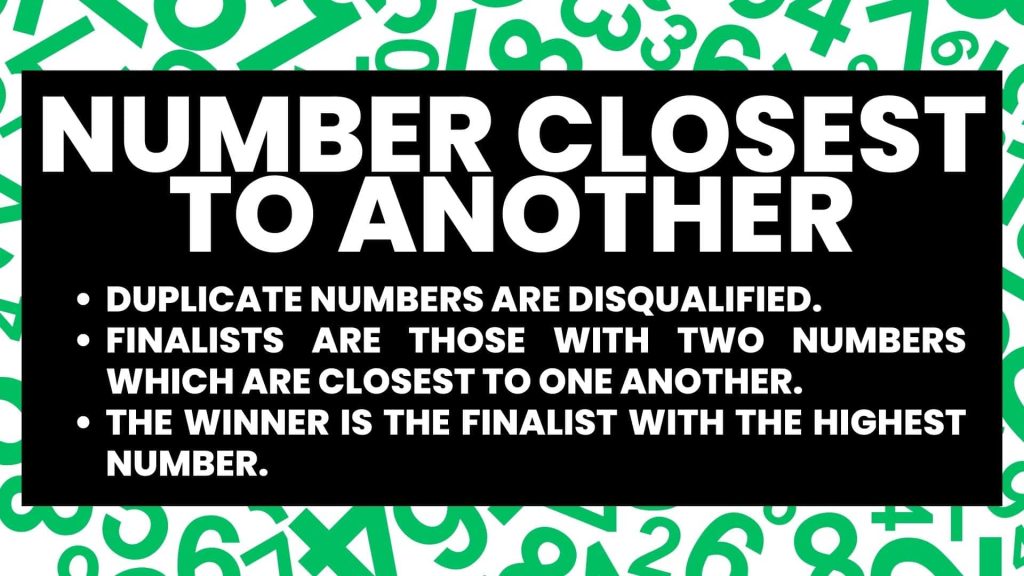
The best way to explain this number contest is to look at an example.
Let’s pretend the numbers submitted by each group were 1, 4, 5, 5, 5.5, 7, 9.
5 and 5 are disqualified from being the winning pair because they are the same number. However, some of my students wrongly interpreted this as the numbers were completely thrown out of the game as if they had never existed.
5.5 would be the winner since it is 0.5 away from 5.
The winner is always the higher number of the two numbers that are closest to one another.
Want to interpret the rules another way? Go for it. Please make this activity into whatever you need it to be for your students!
I will say that this number contest led to the most wandering eyes and “cheating” of any of the other number contests. I witnessed multiple groups watch their neighbors write their answer and then write a number slightly bigger than it under their own poster. It was all in good fun, so I let it slide.
The room was full of laughter and groans as the other groups revealed their numbers.
One student announced to her group “I haven’t laughed this much since science class last year.” I’m going to take that as a compliment given that it was the first day of school.
Least Popular Number Wins
For the least popular number wins contest, students could only pick between the numbers 1, 2, 3 or 4.
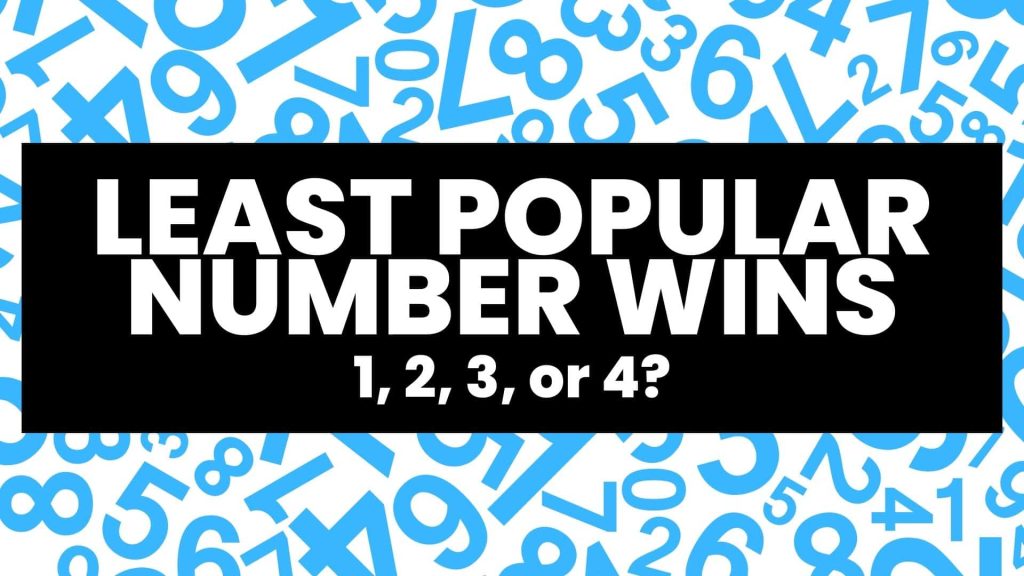
After all of the previous contests where students could pick pretty much anything they wanted, they found this a bit restrictive.
We ended up only playing two rounds of this game instead of the three rounds we played of each of the other number contests.
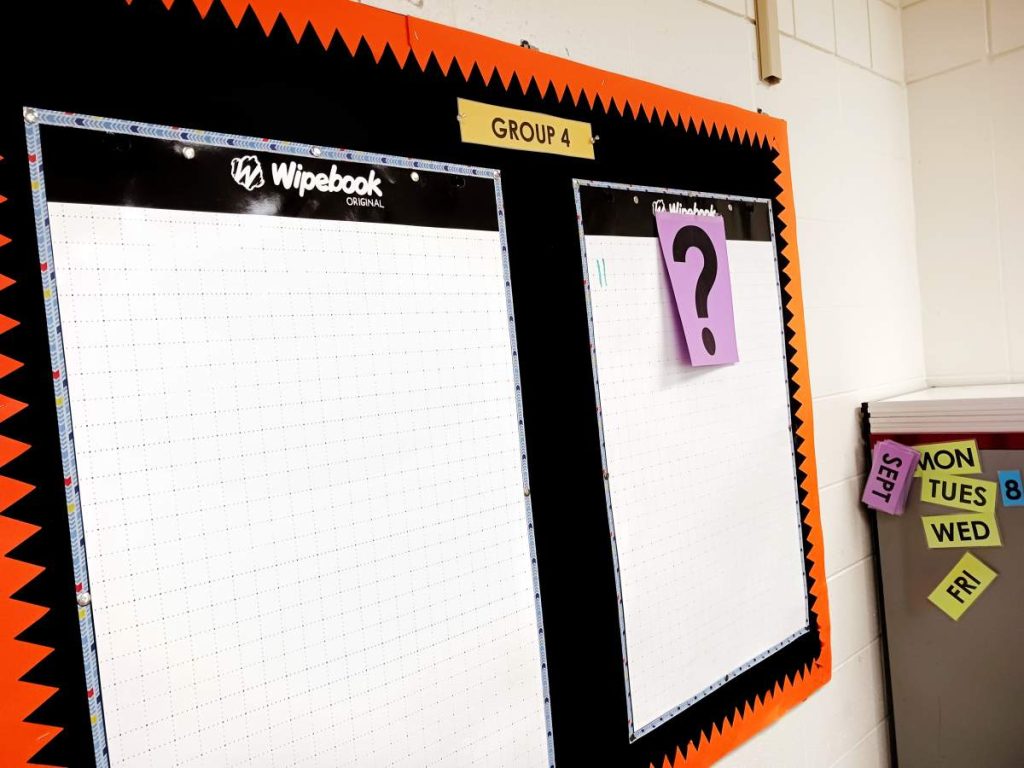
I changed things up a bit with this number contest and had everyone lift their question mark posters to reveal their answers at once instead of going around the room and revealing one answer at a time.
It added a bit of a fun element to it as they frantically looked around the room at ALL OF THE ANSWERS to see if they had had the same idea as any of the other groups.
This contest was also inspired by the MathsJam New Zealand Least Popular Option Contest from 2021.
Frequently Asked Questions
What is the best group size for this activity?
I recommend groups of 2 or 3. I really want to use this activity as an opportunity to get students interacting and collaborating with one another on the first day of school. You could definitely have larger groups if you needed to, but be prepared to have more off-task behavior as the group size grows.
Do I have to have students stand vertically at whiteboards?
Absolutely not. You could use mini dry erase boards with students seated at desks or tables. I would caution you, however, to be on the lookout for students who might try to sneakily change their answer as other groups reveal their answers.
If vertical whiteboards weren’t an option, I would have groups write their answers on small dry erase boards and perch them on the ledge of my large dry erase board with the answer covered. Then I would flip over the boards one by one to reveal the answers.
This could work super well for contests like the median number contest because you could then rearrange the dry erase boards in order!
How long does this activity take?
My high school students spent about 25-30 minutes on it. You could definitely shorten the time required by doing less rounds of each contest or by doing fewer different contests. I probably wouldn’t make the activity any longer, but maybe that’s just personal preference.
What can we do after the activity?
After this number contests competition, I had students return to their tables to work on some partner-based dry erase games. Students had the choice to play Circle Tic Tac Toe, Ultimate Tic Tac Toe, or Sim.
If none of those strike your fancy, check out my ultimate list of 40+ Ideas for the First Week of School. It’s chock-full of getting to know you activities, team building activities, and games and puzzles galore.
Resource Files
Question Mark Posters to Print and Hang Around the Room
Click here to SAVE the file to your device.
Giant Question Mark Poster (PDF)
2300 saves – 6.14 KB
Number Contest Slide Images




